If you've got a bike, you need a lock. Whether you are just wanting to deter…
The Calibre Line T3 29 is a mighty fine first ‘proper mountain bike’, that will be a trusty trail buddy for many years afterwards.
- Brand: Calibre
- Product: Line T3 29
- From: GoOutdoors
- Price: £1,300 (£1,100 to GoOutdoor members)
- SQUIRREL_TEXT_13020977
- Tested by: Benji for 3 months
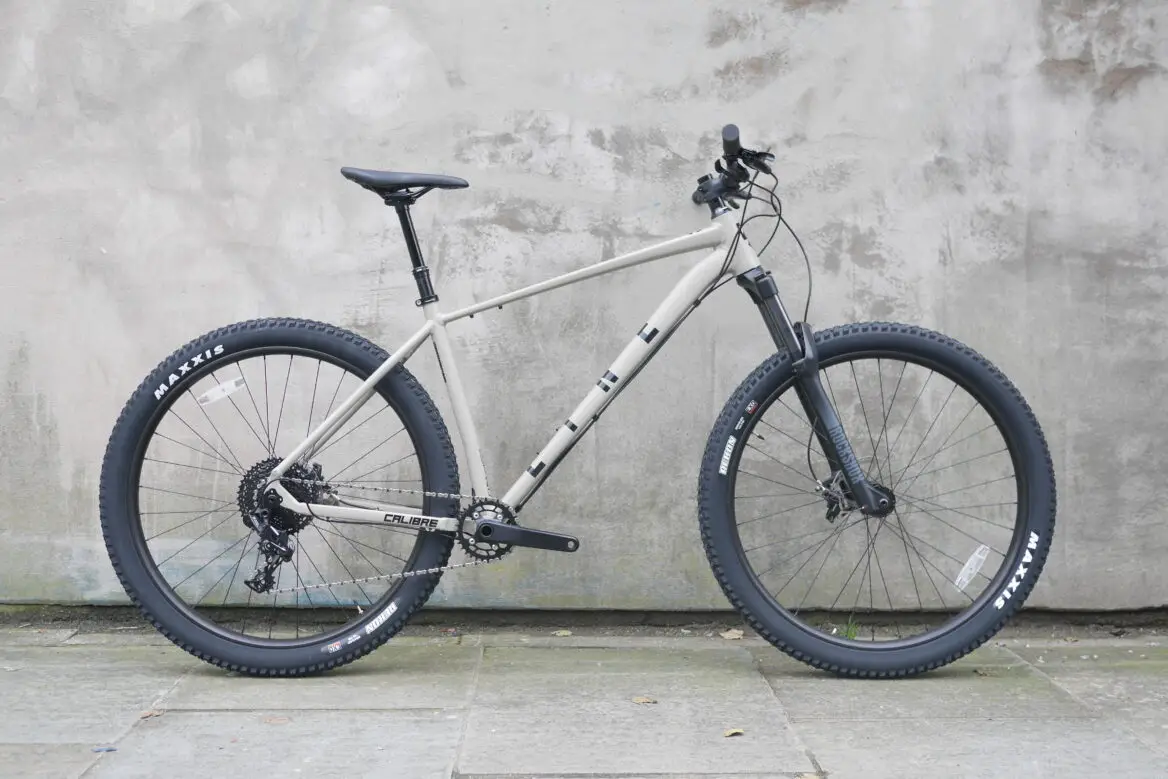
Pros
- Capable geometry
- Good value
- Loads of upgrade potential
Cons
- Shallow-tread balloon tyres struggle
- Mediocre brakes
Capable Calibres
Calibre have something of a reputation for bringing out mountain bikes with high levels of capability allied to low levels of price. The Line T3 29 is their latest flagship 29er hardtail that aims to be much more of a modern trail bike all-rounder than other bikes at this price point which tend to be rather dated in outlook or else overtly twitchy handling XC rigs.
If Calibre have done their sums right, the Line T3 29 should be able to get you up, along and down any sort of terrain. From a quick glance over the geometry and spec sheet, things look positive. The head and seat angles are fine. The reach is generous. There’s a 140mm travel RockShox fork up front and a set of hydraulic disc brakes at each wheel.
Sizing and geometry
The size range is also decently broad. Some brands often only have a size range of three frame sizes. There’s four on the Line T3 29 (S, M, L, XL). It’s worth pointing out to any shorter readers that there’s also a smaller wheel sized Calibre Line T3 27.5 also available if you think you may not get on with large 29in wheels.
Back to the Line T3 29 we have here. More experienced riders may well have their eyebrows raised at the relatively long seat tube and the lack of tread on the high volume tyres. But yeah, all in all the bike doesn’t appear to have any serious weaknesses or incurable issues.
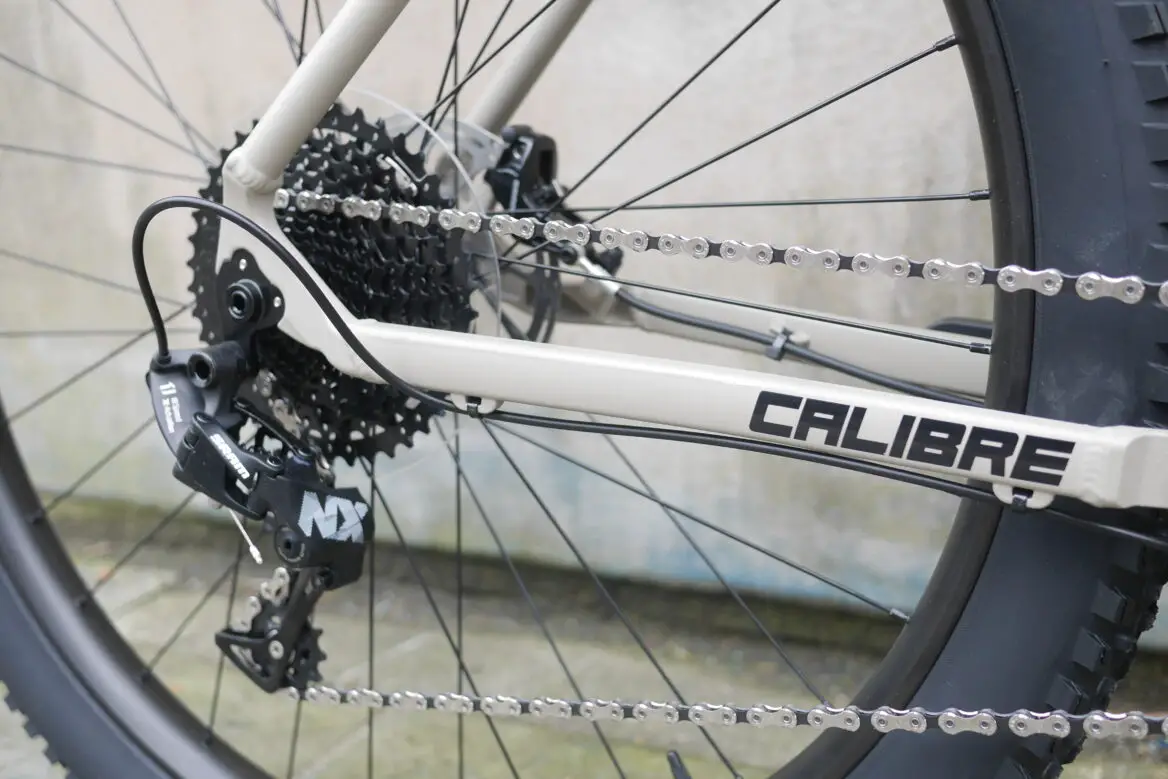
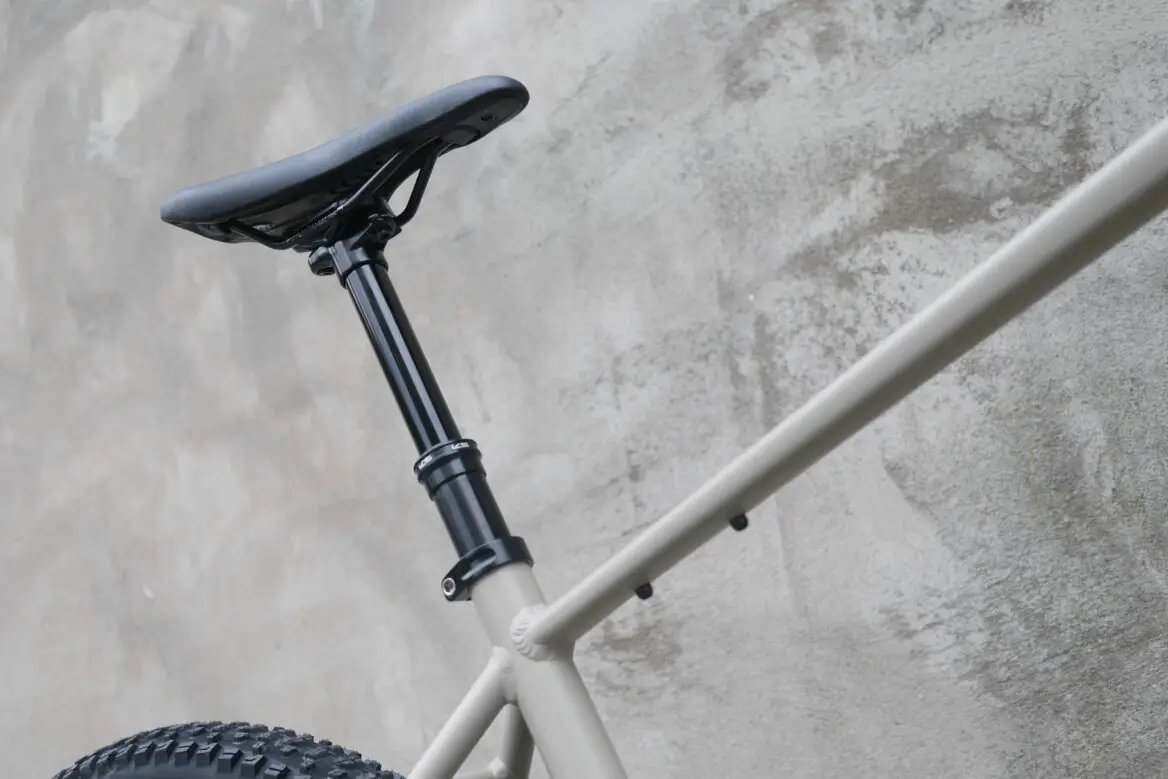
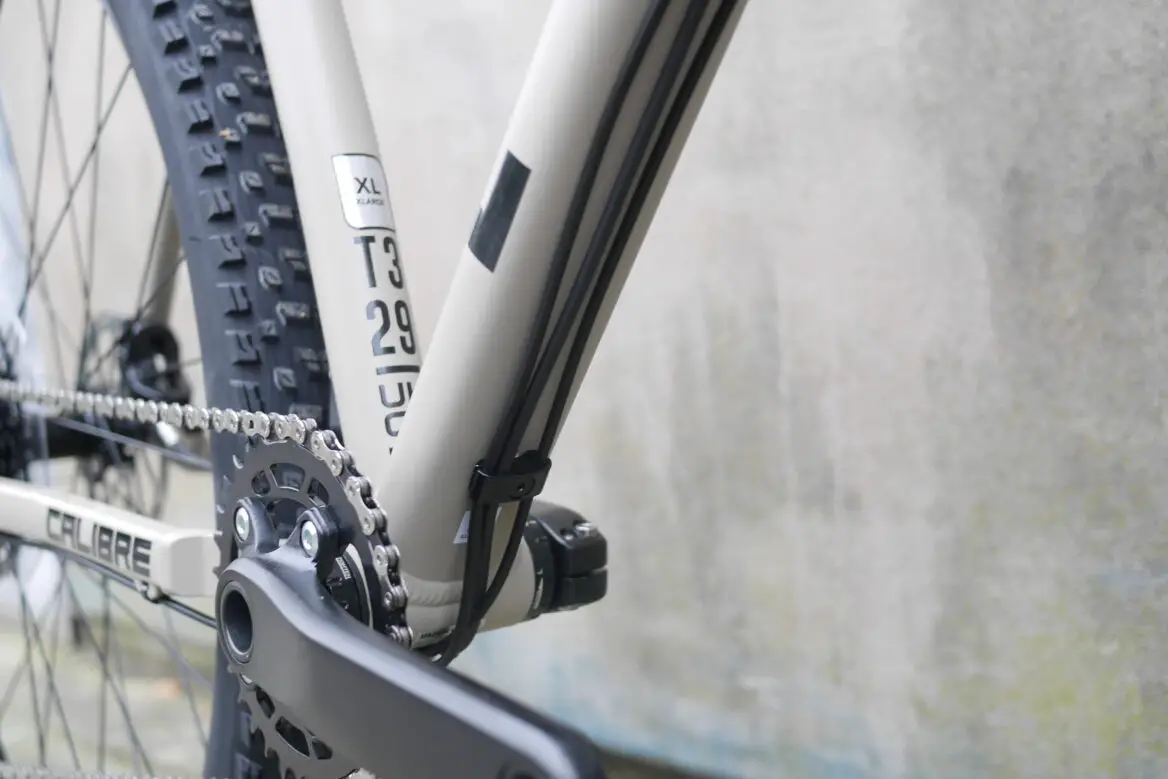
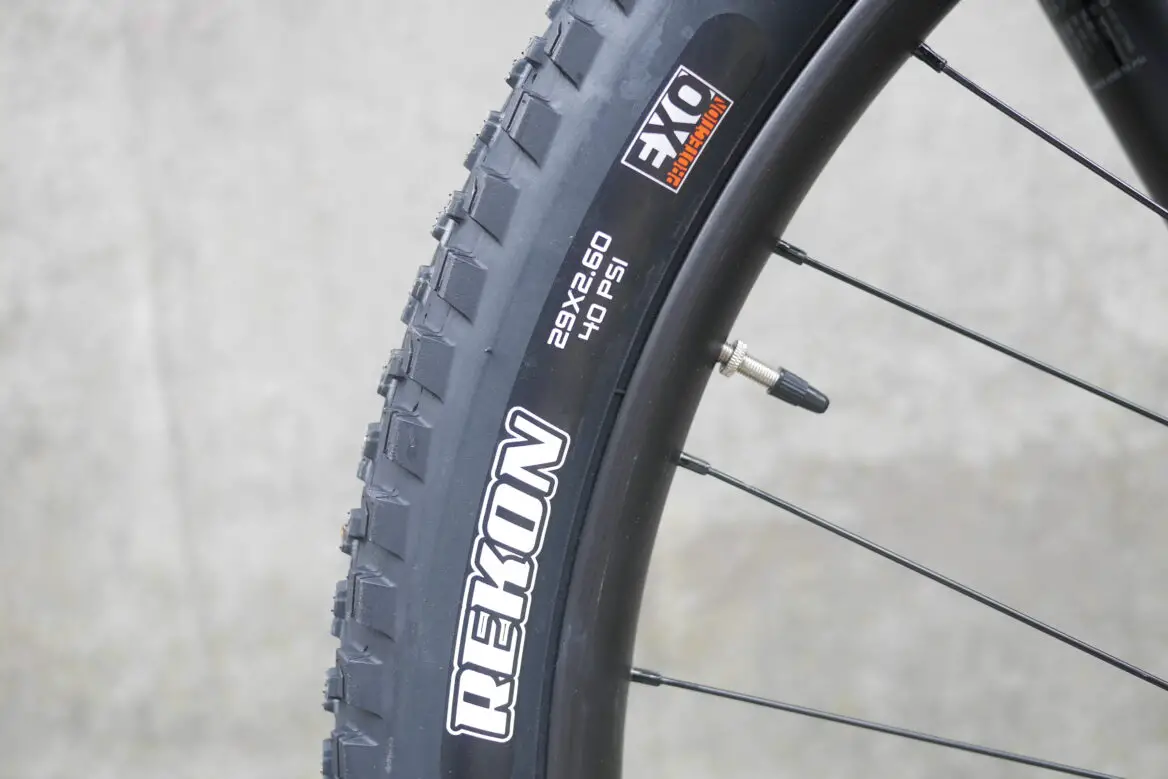
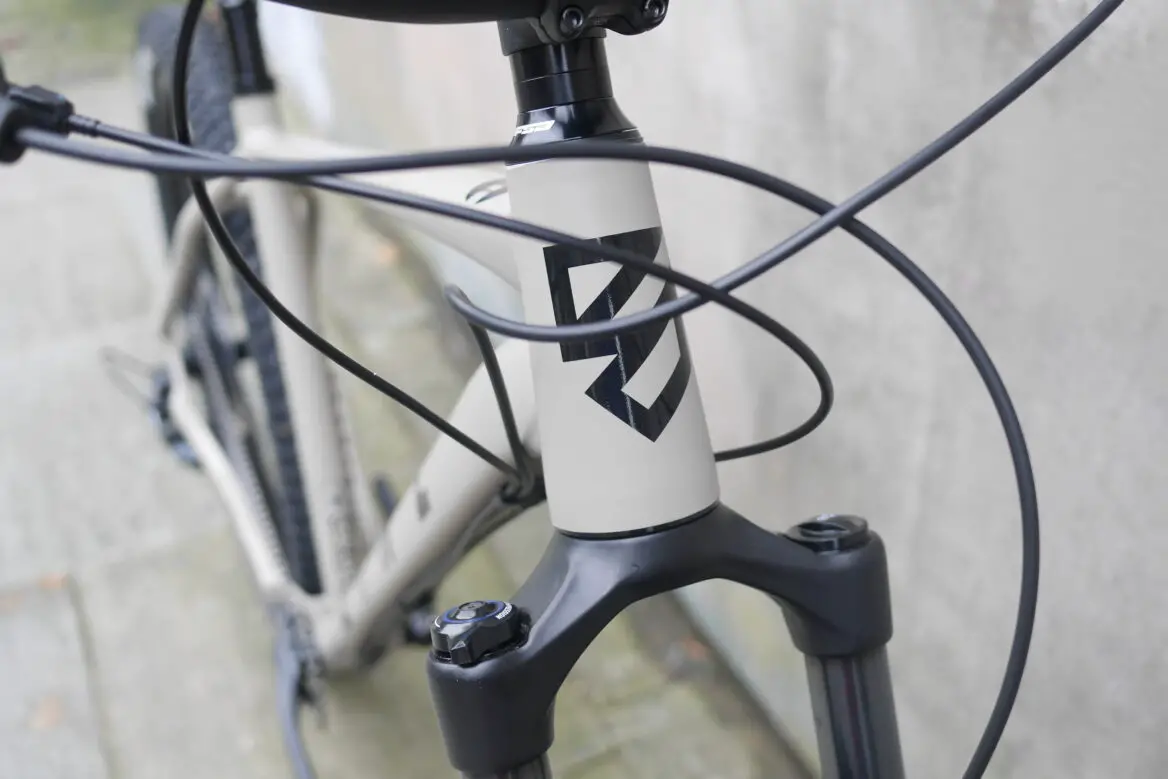
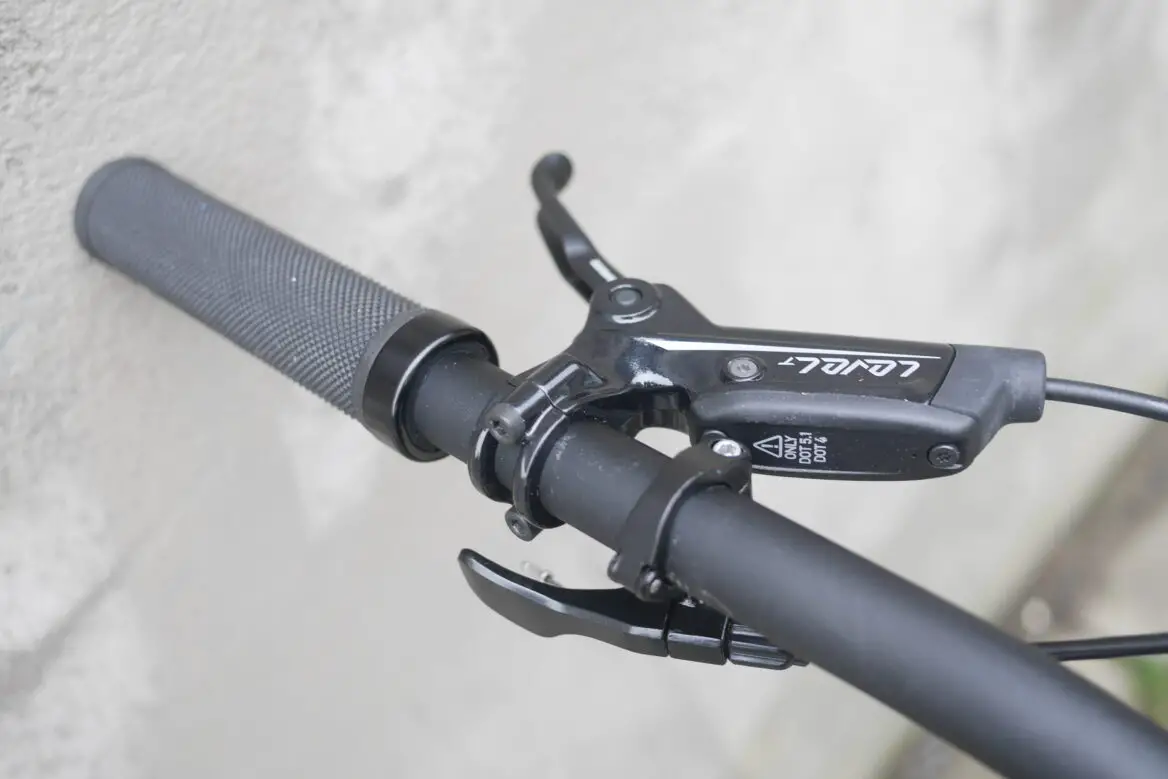
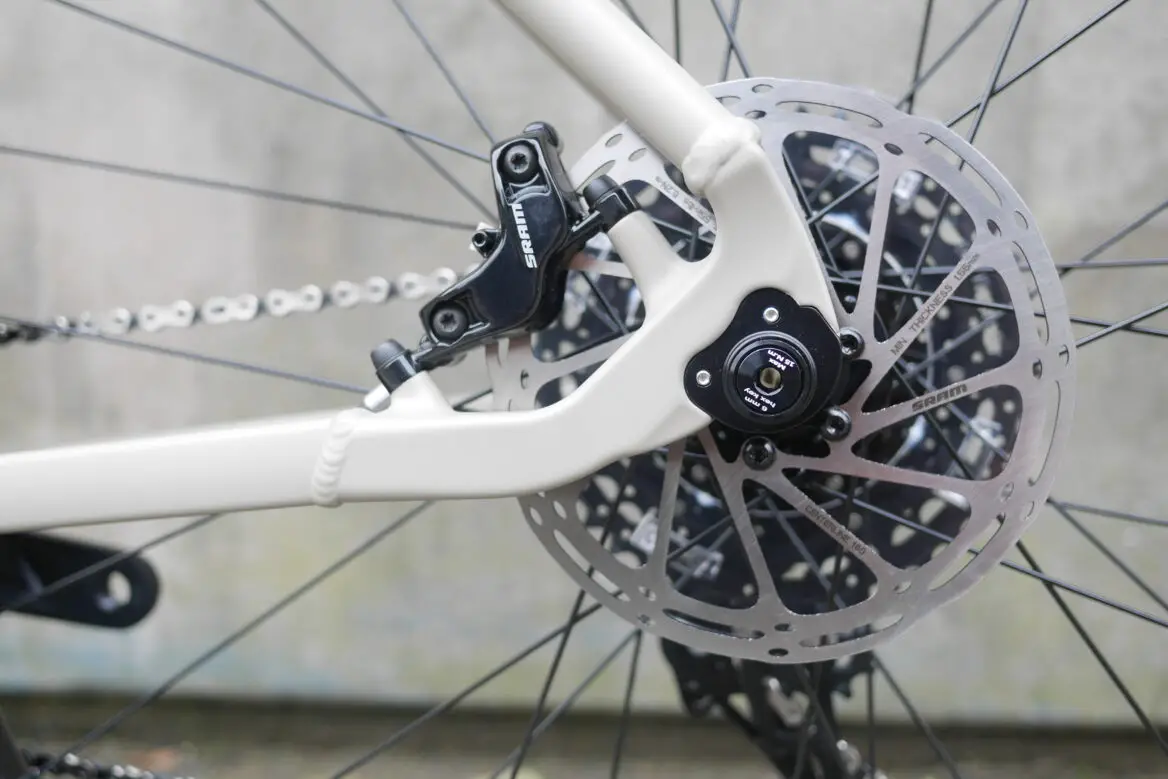
The frameset
The key component to any bicycle is the frame and the frame on the Calibre Line T3 29 is a rather nice looking one. There’s a full complement of modern features such as bolt-thru back-end, tapered head tube, stealth dropper routing and such like. There’s nothing missing that will hamper any future upgrade paths you may wish to take.
There’s a set of bottle bosses on the down tube (and thankfully none on the seat tube which can foul dropper post adjustments and/or upgrades). There’s even a set of accessory bolts on the underside of the top tube for attaching spares/tools/bag on to.
Ultimately, it’s an impressively fabricated and nicely modern-looking mountain bike frame. Whereas some European brands seem to be in hurry to introduce internal cable/hose routing into their entry level hardtails (usually at expense of capable componentry), Calibre’s brakes and rear mech are all fully externally routed. This is a very good thing; it makes maintaining/servicing/upgrading your bike so much easier and nicer to do.
Inspecting the numbers
In terms of aesthetics and features then the Line T3 29 frame is fine and dandy. What about its geometry though? Speaking as someone who is more used to much more expensive and cutting-edge mountain bikes, the Line T3 29 does feel a little bit old fashioned in terms of head and seat angle. The former is relatively steep for a 140mm fork-ed bike (at 65.5°) and the latter is a bit on the slack side (at 75.5°).
Truth be told however, the sheer length of the reach (495mm) coupled with a seriously low slung BB drop (65mm), all helped to offset any nervousness from the head angle by virtue of offering a stable wheelbase and low centre of gravity. The decent length head tube also comes into play in terms of confidence on the steeps.
Seat tube angle and length
The relative slack seat angle was the bigger issue that couldn’t really be masked or offset by anything else happening elsewhere on the bike. To be honest, it’s manageable. With a bit of saddle rail shuffling and old skool saddle-nose perching. We managed with slacker seat angles than this for several decades! But if Calibre are looking for pointers as to what to alter for the next iteration of this bike, a steeper seat angle would be at the top of my suggestions list.
Whilst I’m niggling, the seat tube length is pretty tall, especially on the L and XL sizes. Whilst this doesn’t initially make any difference to the saddle drop (the KS dropper is only 125mm travel) it does make upgrading to longer droppers slightly compromised in the future. And in the immediate term, the lofty top tube and rather mediocre standover do play on your mind when attempting more technical terrain. Again though, this is arguably another case of ignorance is bliss. If you’ve never had a long travel dropper or a bike with loads of standover, chances are you won’t miss ’em.
Feel and handling
As for the ride feel, I can’t vouch for the smaller sizes but I found the bike to offer a pretty pleasant feeling ride. It wasn’t a jarring wrist and/or ankle smasher. Nor was it an unpredictable twangfest. In general it offered a nice balance of keeping you on track and comfy whilst retaining ample information as to how your traction was doing.
On a related ride-feel note, let’s talk about tyres. The large 2.6in volume tyres on the Calibre Line T3 29 struggled with the wintery test period. They simply lack tread and are also very round of shoulder. Letting air out to improve traction just made them feel all wibbly and pretty dangerous on hard turns. The tyres may well be fine in drier times and/or on firmer surfaces but I couldn’t handle them and swapped to out to a set of our test ‘control’ tyres (Maxxis Minion DHR II) so I could get on with properly riding and assessing the bike.
Spec inspection
Turning attention to the rest of the build kit now, how did it all perform?
The RockShox fork was a decent performer. Whilst it certainly did not perform as well as more expensive forks, it didn’t ruin the ride experience. It was supple and free-moving enough to do the principal jobs of suspension: traction and control. I ended up runing it rather firmer than its pressure chart recommended PSI, sacrificing some ability to use full travel but trading that in for an improved level of support and predictable bike handling. Ultimately, I ended up with a 120mm travel fork and that was fine by me.
The bars and stem were totally fine and of appropriate dimensions. The lock-on grips were nothing special but at least they aren’t cheap push-ons that often end up spinning around/slipping dangerously in wet weather. The final contact pooiunt, the saddle, was also totally fine and neutral.
The brakes were arguably the biggest surprise – or reminder. I’ve got used to more expensive brakes and big rotors basically! Budget entry-level brakes like the SRAM Level Ts on this bike are okay. But only just. If it were my bike, I think the second thing (after tyres) that I would look to upgrade would be the brake rotors. I’d get a big 200mm+ for the front (and put the spec front 180mm rotor on the rear). I did actually perform this upgrade towards the end of this test and it did indeed make a world of difference. Better brakes make for better riding.
Gears and dropper
The gearing performed well in terms of shifting and chain-staying-on but, much like me being accustomed to big brakes, I did struggle with the relatively modest 11-42T cassette. I spent an awful lot of the time in the bike’s easiest gear. The most cost effective solution would be to replace the chainring with something like a 28T, with a view to upgrading to a wider range cassette when the current one wears out.
The KS Rage i-Dropper post was (again) a reminder of how I’ve become spoiled by better, more expensive things. In reality, having a dropper seatpost of any travel length is a real bonus on a more affordable price point bike. Occasionally, I did ‘double drop’ the post ie. lowering the whole post into the frame as well as squishing it down its 125mm, and that’s just fine really isn’t it? Leave the post as it is for most of the ride and ‘double drop’ it as and when you’re going to doing ay expended periods of more technical terrain.
Overall
At the end of the day, it’s the unchangeable things that need to be focussed on with entry level mountain bikes. And it’s here that the Calibre Line T3 29 scores very high marks. The frame is great; genuinely capable geometry and a pleasant ride feel for being out on the trails for hours on end. The expensive-to-upgrade items (the fork, dropper and wheels) will be fine for a good while yet. The overly condition-specific tyres may work well for you and your trails. It’s only really the brake rotors that would benefit from replacing with bigger ones to really unleash the bike even further. The Calibre Line T3 29 is a mighty fine first ‘proper mountain bike’, that will be a trusty trail buddy for many years afterwards.
Calibre Line T3 29 specification
- Frame // Aluminium 6061
- Fork // RockShox Recon Silver RL, 140mm
- Wheels // Double-Wall 35mm Alu rims on Formula DC hubs
- Front Tyre // Maxxis Rekon 29 x 2.6in
- Rear Tyre // Maxxis Rekon 29 x 2.6in
- Chainset // Calibre, 170mm, 32T
- Brakes // SRAM Guide T, 180/160mm
- Drivetrain // SRAM NX, KMC, Sunrace 11-42T
- Stem // Calibre Trail, 45mm, 31.8mm
- Handlebars // Calibre Trail, 780 x 20mm, 31.8mm
- Grips // Calibre Trail lock-on
- Seat Post // KS Rage i-Dropper, 125mm
- Saddle // Calibre Trail
- Size tested // XL
- Sizes available // S, M, L, XL
- Weight // 14.7kg
Geometry of our size XL
- Head angle // 65.5°
- Effective seat angle // 75°
- Seat tube length // 500mm
- Head tube length // 130mm
- Chainstay // 440mm
- Effective top tube // 672mm
- BB height // 65mm BB drop
- Reach // 495mm
SQUIRREL_13020977
More Reviews
Review Info
| Brand: | Calibre |
| Product: | Line T3 29 |
| From: | Calibre |
| Price: | £1300 |
| Tested: | by Benji for 3 months |


You must be logged in to reply to this topic.